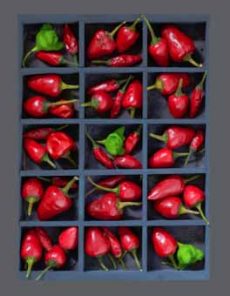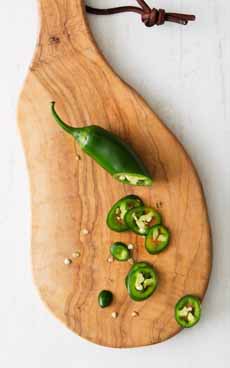FOOD 101: Flavor Development
|
|
When we were in college, our fantasy job was to work for International Flavors & Fragrances, a company that produces ingredients for industry, that are used to create the products sold to consumers. We ended up on a different path. However, as part of our job when creating THE NIBBLE 15 years ago, we began to notice new flavor trends, as ingredients from other cultures became integrated into American cuisine and food products. These now seem commonplace: chipotle, espresso, green tea, harissa, jalapeño, pomegranate, sriracha, wasabi, and more recently, dragon fruit. But 10 and 15 years ago, one was not likely to find them flavoring mainstream everyday foods like condiments, salad dressings and snacks. (Note that these are flavors, apart from ingredient trends like chia, CBD, hemp, non-dairy milks, probiotics and vegan products.) So how does a “new” flavor get integrated into beverages, condiments, snack bars, sweets, etc.? It doesn’t have to be an innovative new flavor. Even a common variation, such as Mint M&Ms, needs to be developed. The flavor is delivered via an emulsion that is developed by food scientists, who study all the possibilities (e.g. type of mint, percentage of concentration) and present options to the product manufacturers. The chosen emulsion is manufactured by the flavor and fragrance company: a new ingredient to add to the recipe of the product. Recently, we had the opportunity to speak with food scientist Donna Wamsley, Director of Research and Analytics for SoRSE Technology, an emulsion supplier for the food, beverage, cosmetics and healthcare products industries. Please explain your background as a flavorist. As a flavorist, I am trained to develop flavor delivery systems that includes new creations, duplications and modifications across various applications. I’ve had the pleasure to work and be mentored by multiple certified flavorists for the last 10 years. What kind of a background do you need to become a flavorist? Along with an educational background in science, you need a minimum seven-year apprenticeship/training program that includes flavor chemistry education, and on-the-job experience with a sponsorship from a certified flavorist. How did you get started? Why food flavorings? Sensory plays a large role in my personal life, as I associate memories with smells and tastes. For instance, the strong floral notes of orchids and the sweet and salty tastes of kalua pig* always remind me of my holidays in Hawaii. So when I discovered that as a profession, you could create flavors that are delicious and that would allow people to reminisce about their memories, I knew I had to make it my career. What are some of your best creations? I have experience creating flavors for products in the categories of beverages, chewing gum, confectionary and oral care. The most enjoyable product for me is M&M’s Mint Dark Chocolate Candies. What are the specific qualities you look for when analyzing ingredients? Within the flavor training program, one gains knowledge of approximately 4,500 raw ingredients as well as regulatory and consumer insight. With that, flavorists are trained to look for specific qualities within each ingredient that will affect sensory application. Are there ever safety concerns? To create a flavor that is safe for consumption, a trained flavorist should review all the ingredients to make sure that ingredients do not exceed the recommended maximum limitation for the intended application. Does cost come into play when making flavors? Absolutely, cost is always a factor. Cost can determine which ingredients, and how those ingredients, are utilized. Natural and/or organic ingredients will be priced higher than synthetic ingredients. How do you design a consistent flavor when sourcing an ingredient from different regions, farms, and growing conditions? For agricultural ingredients, slight variation in quality from year-to-year and region-to-region should be expected as the growing conditions are never the same. To provide consistency, flavors can be modified to compliment the agricultural ingredient so that it is similar from production lot to production lot and year-to-year. In the case of mint, it is possible to create essential oil blends so that it is standardized from each year’s harvest; therefore, a consumer product can maintain a predictable and consistent flavor. How do you develop new flavors? As a flavorist, part of my job is to work with the customer to name what specific flavor qualities they are looking for, and find the right agricultural ingredient to fit that need. For example, if a customer wants to create a product with a strawberry flavor, we have to narrow that down and be more specific because there are many types of strawberry flavors possible—from tart to jammy to juicy. What inspires new flavors? How much is it market demand versus what you would like to make? New flavors are absolutely inspired by market demand. Typically flavors are developed because of the market and what consumers want. However, those market demands can be predicted, and flavorists can work on creating flavors before those trends are in full swing, to be ahead of the market. What is the difference between flavorings in cheap food products versus gourmet foods? It is absolutely possible to make a cost-conscious food product taste fantastic with a flavor profile. It is simply a matter keeping the cost in mind when sourcing your ingredients, utilizing ingredients that will enhance the flavors you have chosen, and pairing flavors that will complement each other. Thoughtfully sourcing and combining ingredients that enhance your flavor profile can lead to a quality product. What are some trends on the horizon in the flavor industry? A trend that that we will see in the foods and beverages are products that compliment relaxation and a healthy lifestyle (i.e., immunity, gut health). Adaptogens and botanical flavors are on the rise. Fermented foods like drinking vinegars, kimchi, and kombucha are gaining popularity in the U.S. Do you see an emphasis on functional ingredients like CBD, melatonin, or probiotics in formulas? For the last three years, consumers have redefined a healthy lifestyle to include regular exercise, relaxation, and attention to mental/emotional health (source: Mintel 2017), which is even more relevant now with the current global pandemic of COVID-19. With that, functional foods and beverages are becoming more and more influential. Consumers want nutritious foods and beneficial beverages. Yes, consumers want foods and beverages to taste delicious, but if they’re also functional, consumers will be more satisfied and fulfilled. |
|
|
________________ *Kalua is a traditional Hawaiian cooking method that utilizes an imu, a type of underground oven. Kalua pig, or pork, is a shoulder butt that is rubbed with sea salt, wrapped in ti leaves, and slowly cooked in an oven using liquid mesquite smoke, rather than cooking in an imu. |
||





